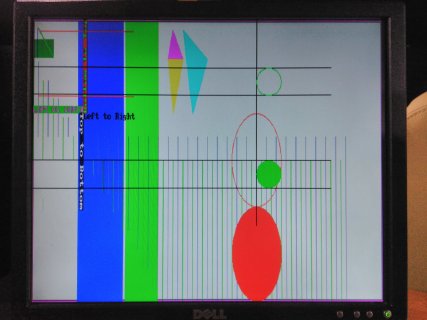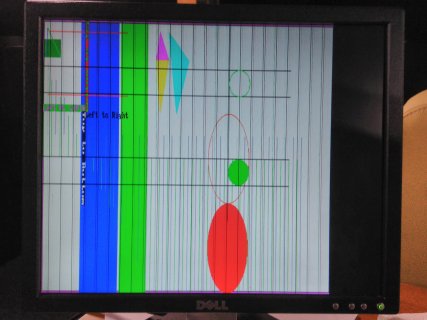Hello,
I have just released a VGA library running without any CPU help, 100% hardware. It can be downloaded here: https://github.com/qix67/uVGA
The library works with pixels in RGB332 format (=256 differents colors).
Image resolution depends of CPU frequency. When running @24Mhz (yes, 24Mhz), image resolution is 200x240. At 240Mhz, image resolution is 703x300. Video frequencies are chosen to best fit the image resolution. 703x300 fits inside 800x600@60 video settings and looks like a full screen image. 200x240 fits inside 640x480@60.
Various graphical primitives are provided, most of them share the same API as DueVGA project.
The library was developped on teensy 3.6 but will probably work on teensy 3.5 without any change, perhaps you will have to define additionnal modeline if the CPU cannot run at the same speed. It also works on teensy 3.2 but due to memory size, resolution will be rather low.
Enjoy and fill free to comment and contribute.
I have just released a VGA library running without any CPU help, 100% hardware. It can be downloaded here: https://github.com/qix67/uVGA
The library works with pixels in RGB332 format (=256 differents colors).
Image resolution depends of CPU frequency. When running @24Mhz (yes, 24Mhz), image resolution is 200x240. At 240Mhz, image resolution is 703x300. Video frequencies are chosen to best fit the image resolution. 703x300 fits inside 800x600@60 video settings and looks like a full screen image. 200x240 fits inside 640x480@60.
Various graphical primitives are provided, most of them share the same API as DueVGA project.
The library was developped on teensy 3.6 but will probably work on teensy 3.5 without any change, perhaps you will have to define additionnal modeline if the CPU cannot run at the same speed. It also works on teensy 3.2 but due to memory size, resolution will be rather low.
Enjoy and fill free to comment and contribute.
Last edited:



